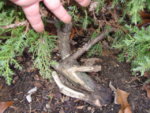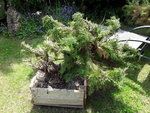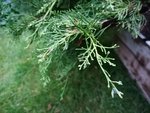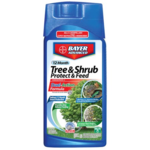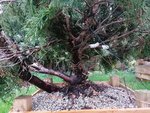Ready for some horror?
View attachment 247580View attachment 247581
View attachment 247582
Here are some pictures. The bottom one is going to make it. The upper one is still on the edge, but after adding the extra drainage holes and after fixing some air pockets, it seems to have stopped declining.
Things I've learned by making mistakes:
- Tip blight occurs when you drown a juniper. It doesn't seem to happen in a juniper coming from the same clump in better soil.
- Apple cedar rust affects a tree way less if the soil is well draining; the drowned one had giant fruiting bodies, the healthier one just had the stuff living underneath the bark but not fruiting and therefore not spreading.
- Interior foliage goes first, then entire branches.
- Lime sulphur doesn't scare wood worms. And they eat through chewing gum (tried to suffocate them by covering the holes).
- It can take months before a juniper shows actual decline. These were dug out in mid winter, but only since a month or so it has been declining. The soil conditions sucked from the start.
- A juniper can be dying and actively growing at the same time.
- Too much bark = too much trouble.
Next spring I'm going to repot them both, or maybe this fall depending on how much rain we get. I have to admit that they're in the wrong type of soil, I knew this and now I have to take another risk to get them back to actual good health.
Less soil might actually be better since it dries faster, better aeration and easier to adjust. And it would save me a lot of back trouble; these boxes weigh as much as I do.
I could keep them in these boxes and keep trying to adjust the conditions, but the mix is just awful.
I'm quite happy that they aren't dead, yet. But no hard feelings if either one succumbs. I'm learning new things! That's what matters.

